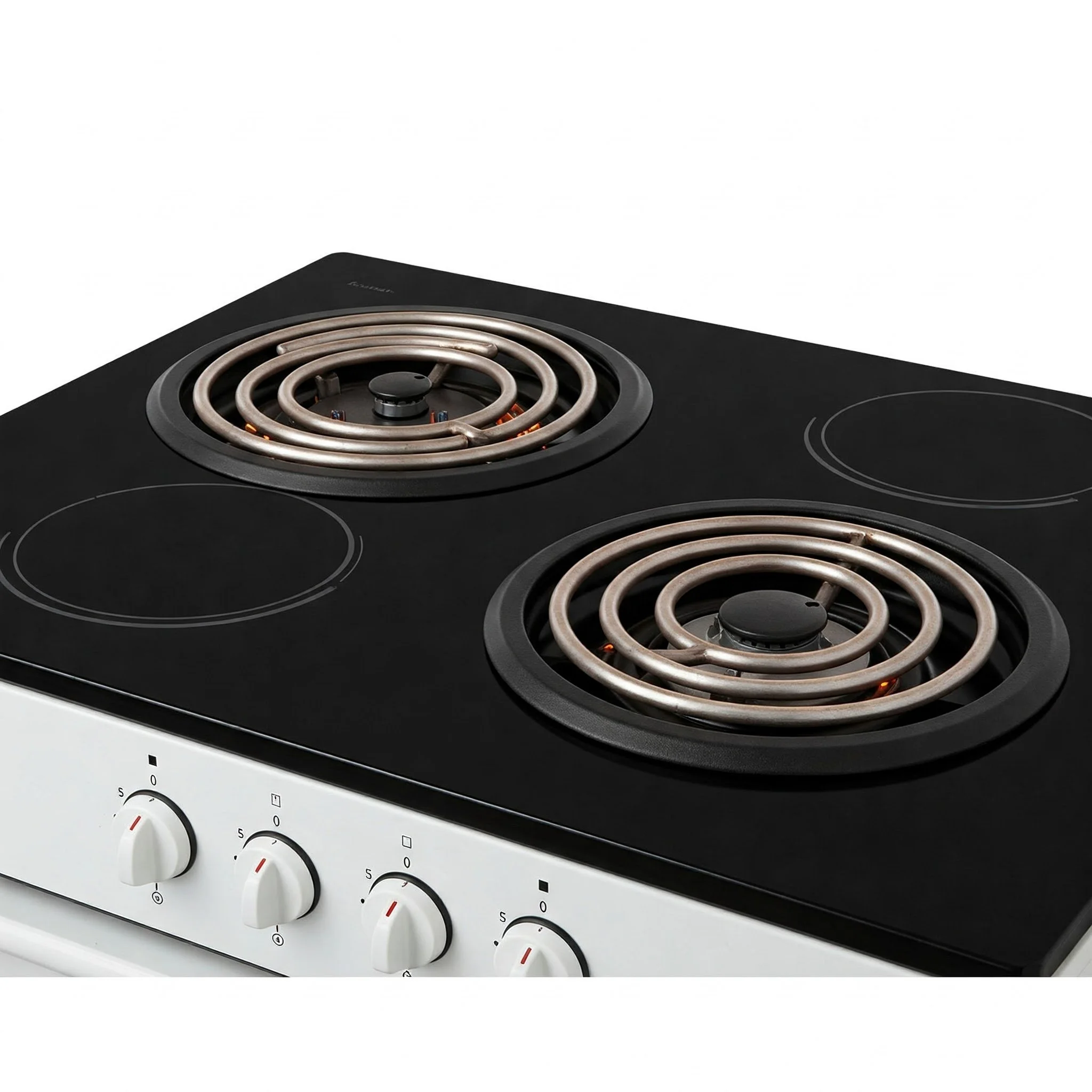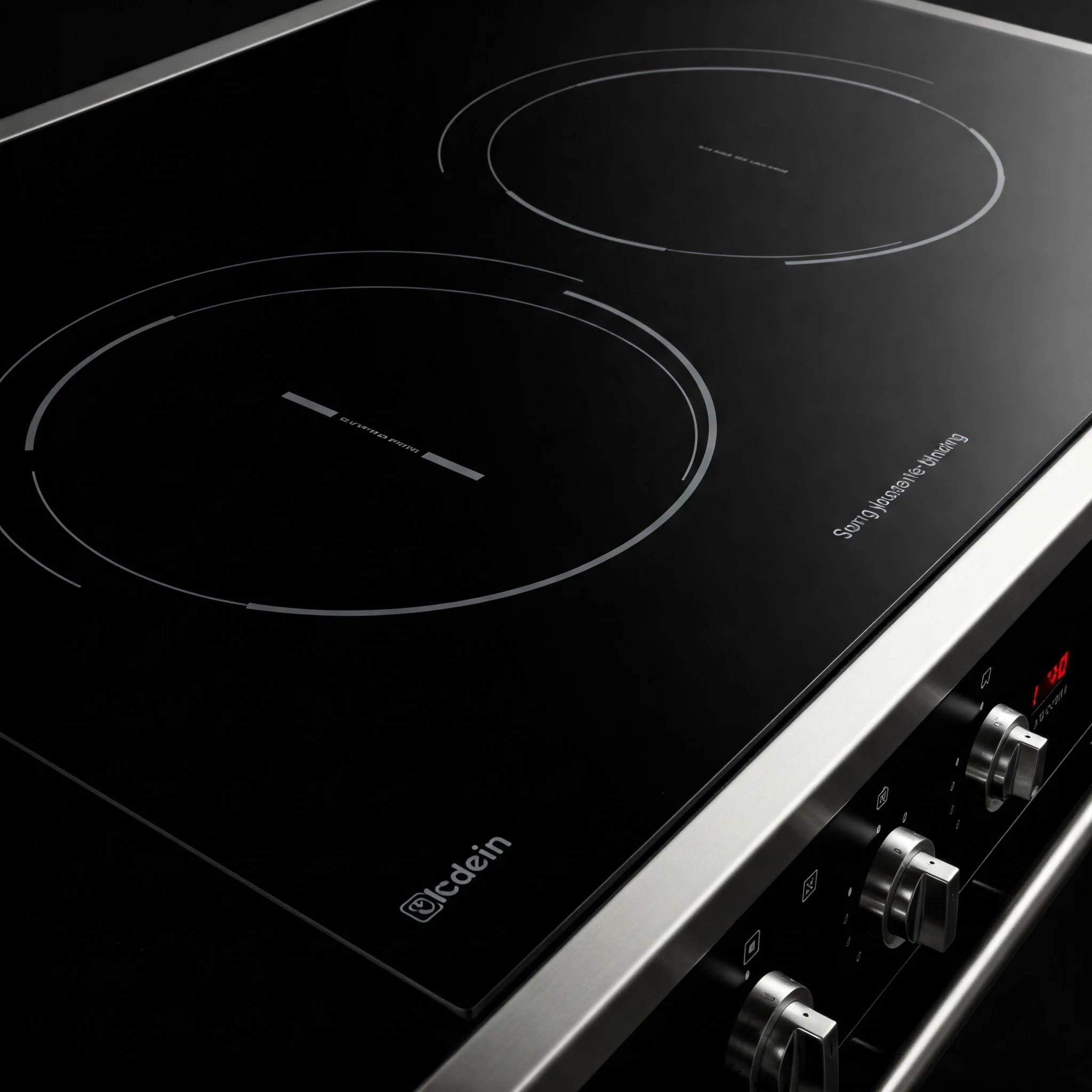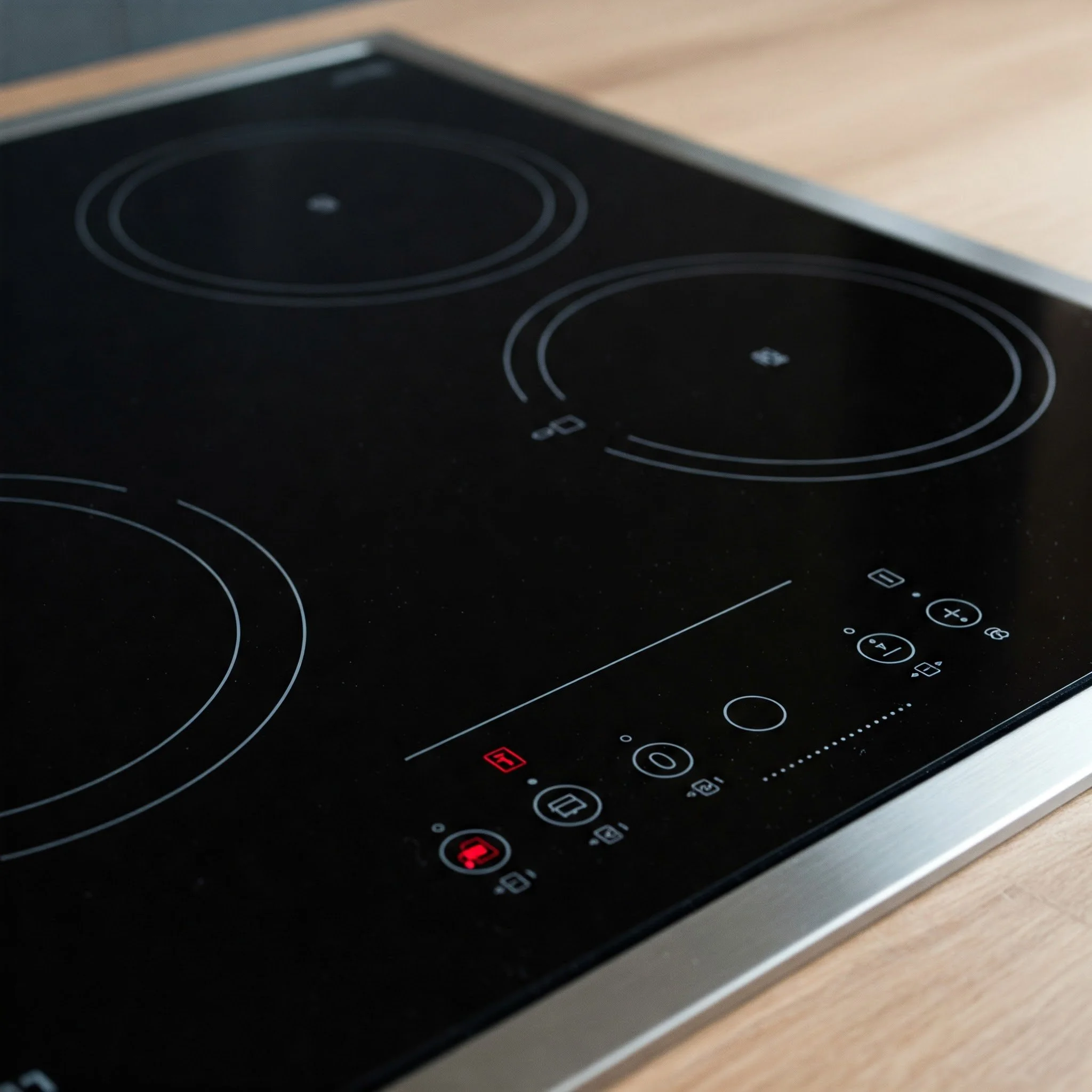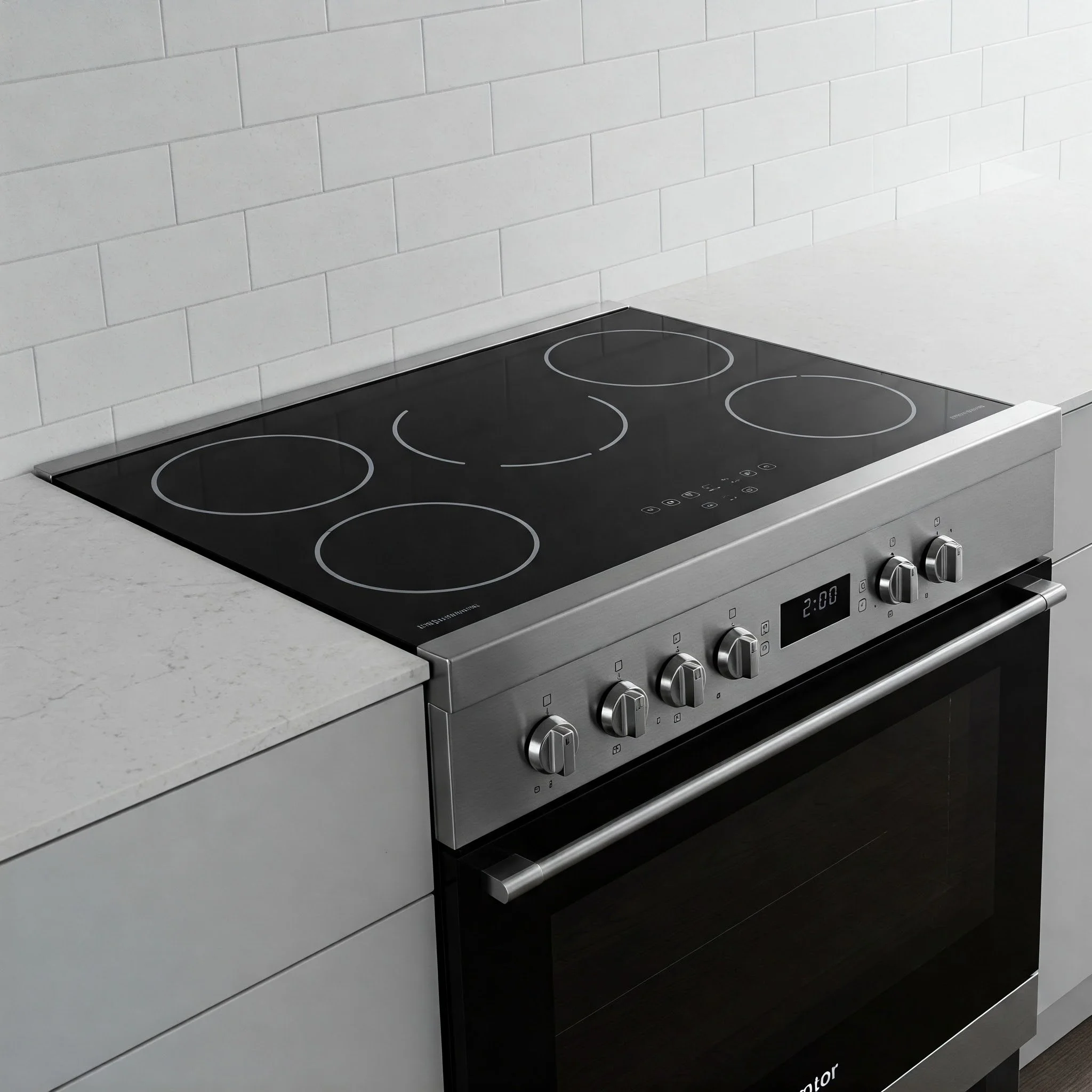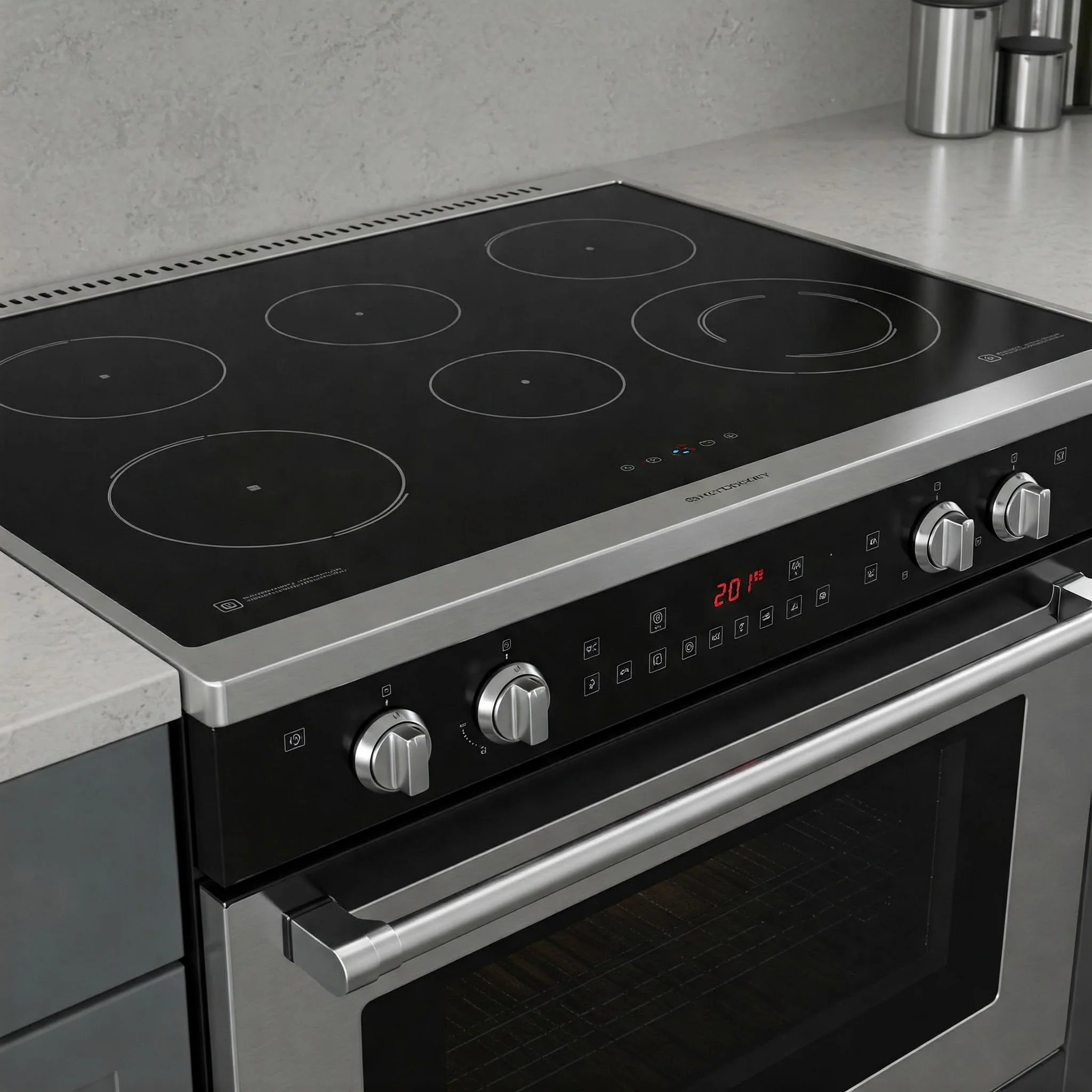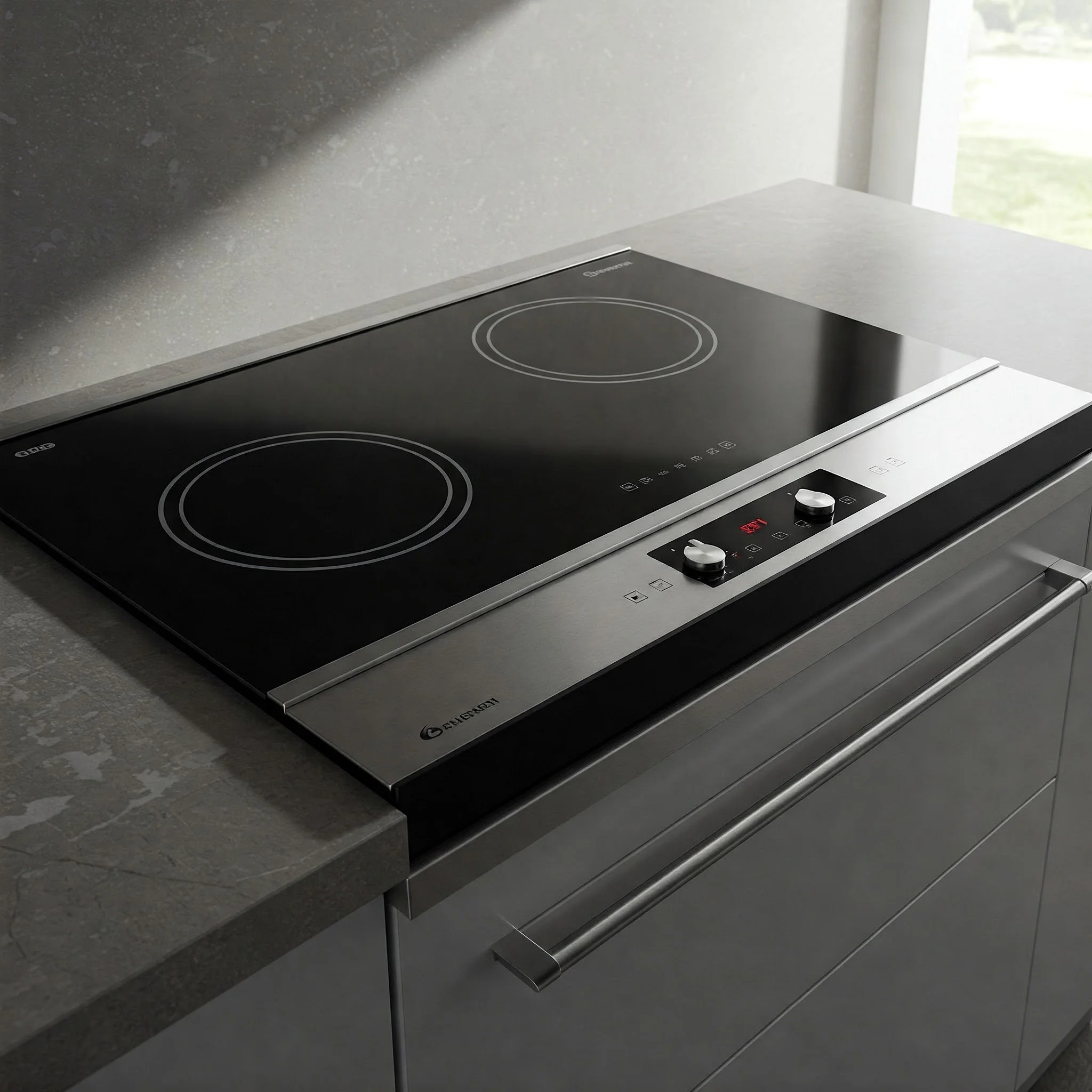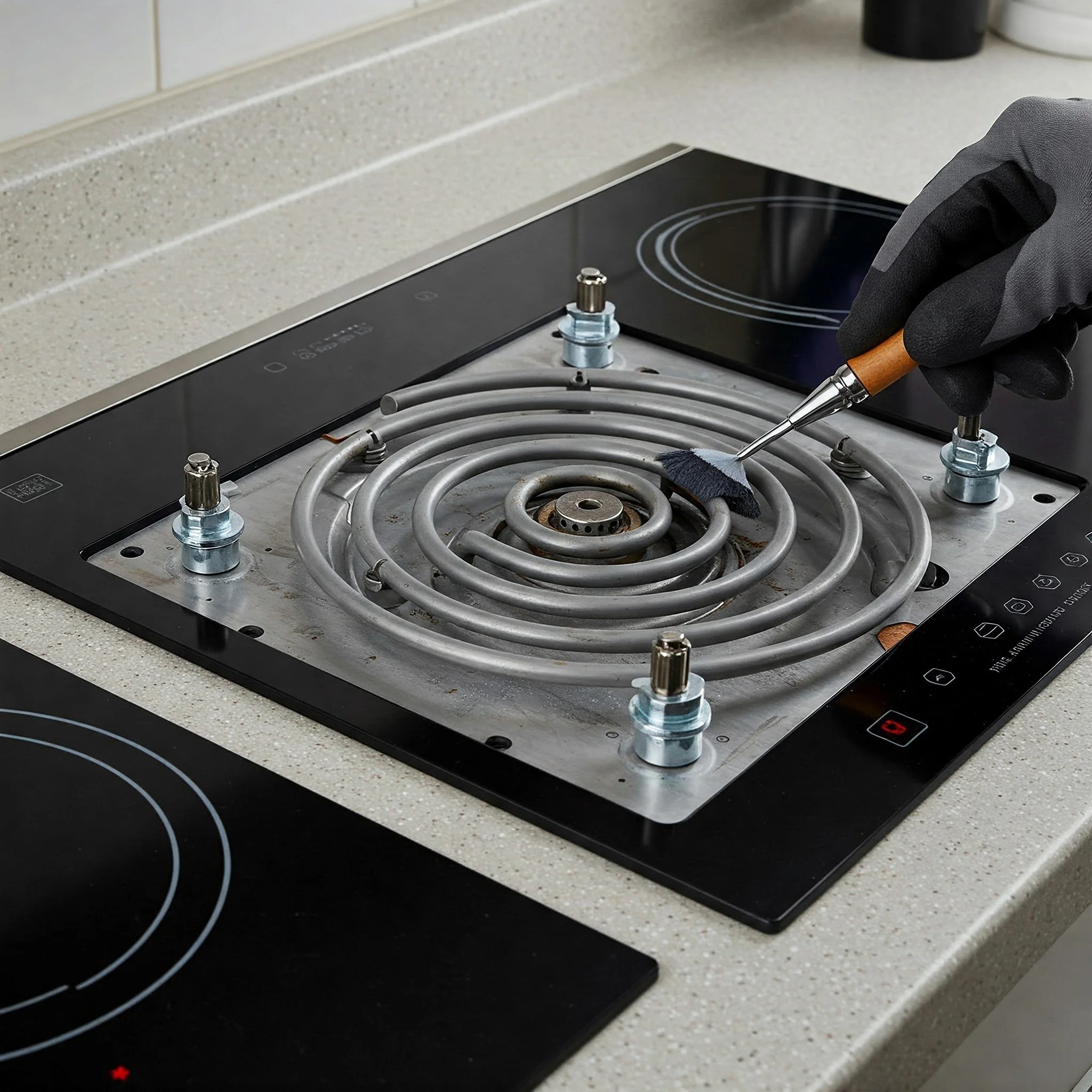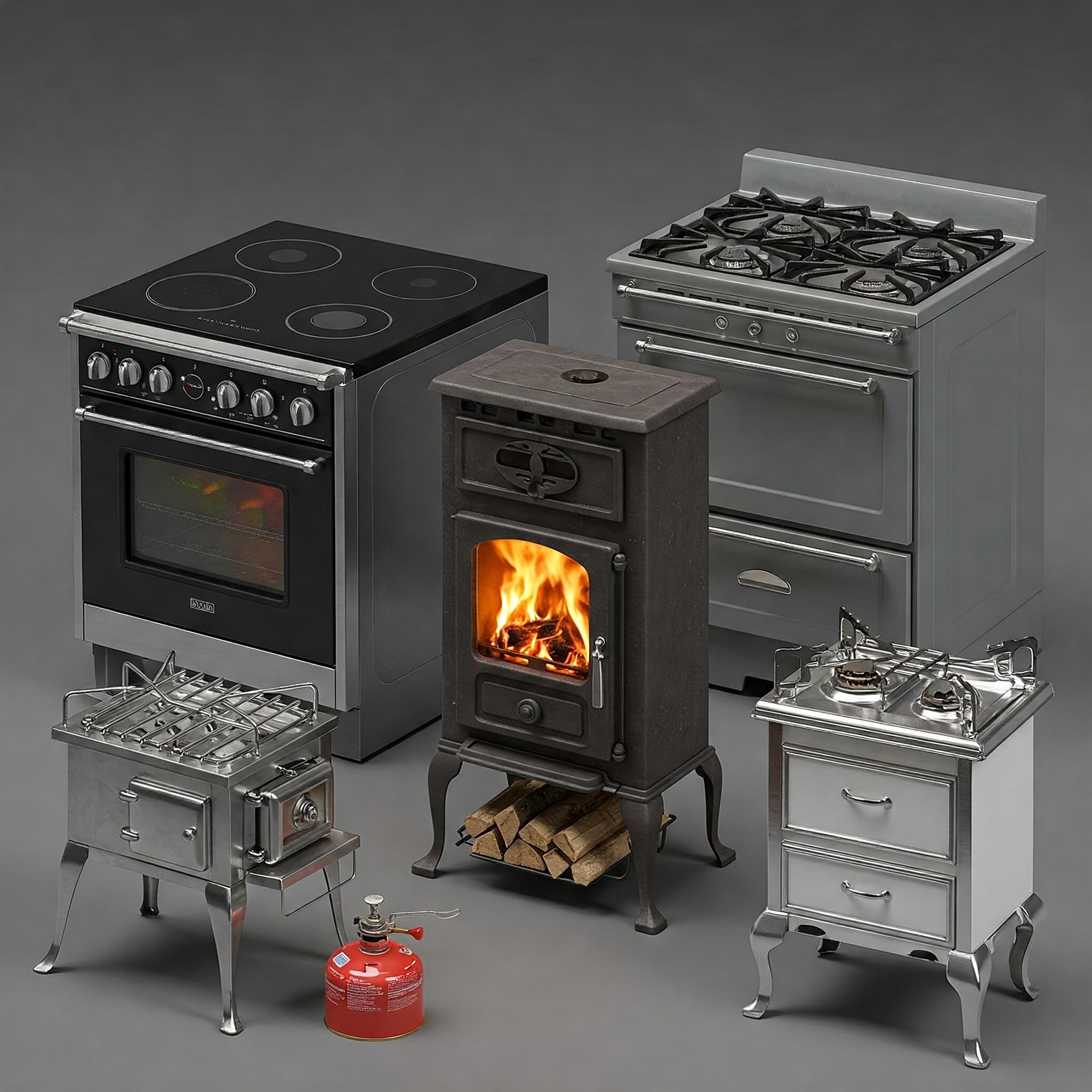Types of Electric Stoves and How to Choose One
Wondering which electric stove will heat up your cooking routine most effectively? Check out our deep dive into the types of electric stoves and how to choose one, complete with key features, pros and cons, and must-read FAQs!
Have you ever strolled through an appliance store, only to be dazzled by the array of shiny stoves, each promising culinary bliss? Then you spot the electric models—sleek, modern, and oh-so-tempting. But hold your horses! The truth is, not all electric stoves are created equal. Whether you’re a gourmet chef or a macaroni-and-cheese maestro, choosing the right electric stove can mean the difference between a stress-free cooking experience and endless frustration.
So, how on earth do you decide which one fits your lifestyle (and your kitchen)? That’s exactly what we’ll uncover here. In this comprehensive guide on “Types of Electric Stoves and How to Choose One,” we’ll walk through various models, highlight what sets each apart, and dish out insider tips for picking the best stove for your space. Ready to cook up some knowledge? Let’s dive right in.
1. A Quick Look at Electric Stoves
Before we explore the different types of electric stoves and how to choose one, let’s get the lowdown on why electric stoves are even worth your attention. While gas stoves have their fans, electric stoves bring their own set of perks to the table:
Ease of Use: No pilot lights or open flames. Just plug it in, twist a knob, and voila—heat!
Sleek Design: Many electric models feature smooth, glass-ceramic cooktops that offer a clean, modern look.
Steady, Even Heat: Electric stoves can often maintain a consistent heat level, which is great for simmering sauces or frying up golden-brown perfection.
Less Kitchen Heat: Electric burners tend to give off a bit less ambient heat compared to old-school gas flames, which can help keep your kitchen cooler.
Of course, there’s no universal “best stove for everyone,” which is where the “Types of Electric Stoves and How to Choose One” discussion really starts to simmer.
2. Traditional Coil Cooktops
2.1 What Are They?
First on our list is the classic coil-style electric stove. You’ve likely seen these in older homes—or in your grandma’s kitchen. They feature electric heating elements shaped like coils that glow red-hot when in use. The coils themselves serve as the cooking surface, and you’ll usually have drip pans below to catch spills.
2.2 Pros
Budget-Friendly: Coil cooktops are often the most wallet-friendly option.
Durable: Those coils can take a beating without major harm. If one wears out, you can typically replace it without gutting the whole stove.
Faster Repairs: Because of their straightforward design, you won’t need rocket science to fix minor issues.
2.3 Cons
Harder to Clean: Food and grime love to lurk in the drip pans and around the coils.
Uneven Heat: The heating element can have hot spots or slow response when adjusting temperatures.
Less Modern Look: If you’re going for that sleek, minimalist vibe, coils might clash with your dream aesthetic.
2.4 Who Should Choose This Type?
If you’re on a budget, and you prize functionality over style, a coil cooktop could be a solid bet. Also, folks who don’t mind the retro feel might find coil cooktops downright charming. If you want to dabble in the “Types of Electric Stoves and How to Choose One” conversation but aren’t ready to break the bank, here’s your easy entry point.
3. Smooth Top Electric Ranges
3.1 Defining Smooth Top Stoves
Next up: smooth top electric ranges. These are the ones with that futuristic, glass-ceramic surface. Instead of exposed coils, they conceal heating elements just under the glass. Switch on a burner, and you’ll see the glowing ring through the surface—it’s as if your stove has a built-in light show!
3.2 Advantages
Easy Cleanup: One of the biggest perks is the flat surface, which you can wipe down without removing coils or drip pans.
Modern Aesthetic: The sleek silhouette adds a dash of elegance to most kitchens.
Fairly Even Heating: While not as rapid as induction (we’ll get to that soon), smooth top stoves still offer decent temperature control.
3.3 Drawbacks
Prone to Scratches: Glass-ceramic surfaces can show marks if you slide heavy pans around.
Longer Heat-Up & Cool-Down: Compared to coil burners, these can take a moment to heat up—and they stay hot for a while after you turn them off.
Sensitive: You’ve got to be mindful of the cleaning products you use, or you could damage the surface.
3.4 Perfect For?
If you love style but don’t want to pay an arm and a leg, a smooth top electric stove might be your new best friend. It gives a polished look, and maintenance is relatively straightforward—just don’t go tossing cast-iron pans onto it like a medieval warrior.
4. Induction Cooktops (Yes, They’re Electric!)
4.1 Why Induction?
You might hear the term “induction” and think, “Aren’t those fancy or something?” Indeed, induction cooktops are typically regarded as top-tier in the electric category, using electromagnetic fields to heat the pan itself, not the burner. Essentially, the stove stays relatively cool while your cookware takes center stage—kind of like having a personal chef who heats the pot from the inside out.
4.2 Pros
Speed: Many people claim induction stoves boil water faster than gas. No more twiddling your thumbs waiting for pasta night.
Energy Efficiency: Since induction directly transfers energy into your cookware, less heat is lost to the air, reducing wasted electricity.
Cool-to-Touch Cooktop: Besides the residual heat from the pan, the surface stays safer to handle.
Precise Control: You can dial the temperature up or down in a flash, akin to cooking on gas but without the open flame.
4.3 Cons
Cost: Induction cooktops can leave a dent in your wallet.
Cookware Compatibility: You need magnetic pots and pans. If a magnet sticks to the bottom, you’re golden; if not, it’s time for a kitchenware upgrade.
Learning Curve: The lightning-fast heating (and the fact that the cooktop doesn’t glow red) can be surprising at first, so be prepared for a short adjustment period.
4.4 For Whom?
Induction is ideal for gadget-lovers, tech-savvy cooks, or anyone who wants the precision of gas without the constant pilot light worries. If your budget permits and you’re serious about cooking (or just love a futuristic vibe), induction belongs high on your short list in the “Types of Electric Stoves and How to Choose One.”
5. Freestanding vs. Slide-In vs. Drop-In Models
Now that we’ve tackled the differences in electric stove surfaces—coil, smooth top, and induction—let’s talk about stove design styles. Because, let’s be real: how the stove fits into your kitchen is almost as critical as how it cooks.
5.1 Freestanding Stoves
Characteristics: These are your classic one-piece appliances with a back-guard (where the controls typically sit). They can stand alone or fit between cabinets.
Pros: Usually more budget-friendly, plenty of options, easy to install since the sides are finished.
Cons: Some people find the raised back-guard less visually appealing in a sleek kitchen design.
5.2 Slide-In Stoves
Characteristics: Slide-in models lack a bulky back-guard, so controls are on the front or top edge. They’re designed to slide in between cabinets for a custom, built-in look.
Pros: Seamless integration with countertops, no dreaded gaps where crumbs can fall.
Cons: Often pricier than freestanding models, and you might need to ensure your counters are precisely cut.
5.3 Drop-In Stoves
Characteristics: These are even more integrated than slide-ins. The cooktop rests on the counter, and the oven portion fits flush with cabinetry.
Pros: Offers a high-end, custom appearance, like it was crafted just for your kitchen.
Cons: Typically, they require specialized installation and can be more expensive. Also, you lose the bottom drawer storage found in many freestanding stoves.
6. Key Features to Look For
So, you’ve got a sense of the “Types of Electric Stoves and How to Choose One.” But let’s dig a little deeper: what actual features matter most? Let’s break it down:
Convection Oven
A convection setting uses a fan to circulate hot air, ensuring more even baking and faster cooking times. Great for those who love perfect pastries or evenly roasted veggies.
Self-Cleaning Functions
Some stoves offer self-clean or steam-clean modes. If you’d rather not spend Saturday afternoons scrubbing oven gunk, consider a self-cleaning model.
Warming Drawer
A built-in drawer that keeps dishes warm without overcooking them. Handy for entertaining or staging multi-course meals.
Control Panel Layout
Does front-mounted control freak you out because you’ve got curious kiddos? Or maybe you prefer top-mounted so you don’t have to reach over sizzling pots. Think safety and convenience.
Smart Connectivity
Yes, stoves have gone smart! Imagine preheating your oven via a smartphone app while you’re still at the grocery store. If you’re big on tech, look for Wi-Fi-enabled models.
Safety Locks and Indicators
Look for stoves with hot-surface indicators (so you don’t accidentally place your hand on a recently switched-off burner) and child lock settings.
These features can dramatically change how you interact with your stove day in and day out. So keep your eyes peeled for the ones that suit your cooking style.
7. Energy Efficiency and Costs
Sure, your brand-new stove might look fantastic, but how will it impact your energy bill? Electric stoves, in general, can be more energy-efficient than gas if you choose the right model. Induction stoves often rank best in efficiency, thanks to direct heat transfer. However, the initial sticker price for induction can be hefty.
7.1 Checking for Energy Star Certification
Some models may carry an Energy Star label, which indicates they meet specific standards for energy savings. Though this label is more commonly associated with refrigerators, dishwashers, and the like, certain ovens and stoves may also have efficiency ratings.
7.2 Long-Term vs. Short-Term Costs
It’s tempting to grab the cheapest stove you can find, especially if you’re on a budget. But remember, cheaper stoves may lack energy-saving features, leading to higher electricity bills long term. Balancing up-front costs against monthly savings is often where the real challenge lies.
8. Making That Final Decision: Types of Electric Stoves and How to Choose One
You’ve made it this far—congrats! We’ve covered coil vs. smooth top, induction’s bells and whistles, and even the difference between freestanding and slide-in models. So how do you distill all this info into one glorious choice?
8.1 Reflect on Your Lifestyle
Do you whip up gourmet meals every other day or mostly rely on microwave magic?
Are you super picky about consistent heat and precise temperature control?
Is easy cleaning a top priority, or are you okay with a bit of scrubbing?
Your answers to these questions might push you toward an induction cooktop with a convection oven or keep you perfectly content with a basic coil design.
8.2 Measure Your Space
There’s nothing more soul-crushing than buying the perfect stove, only to find it doesn’t fit. Measure the width, depth, and height of your available slot—then measure again. Write it down on a sticky note, or snap a quick pic on your phone.
8.3 Don’t Forget the Aesthetics
Sometimes, we pretend we don’t care about looks, but c’mon—if your new stove clashes with your kitchen’s vibe, that brand-new-appliance thrill can fade fast. Consider your cabinet style, countertop color, and overall design theme before locking in your choice.
8.4 Create a Budget (and Stick to It… Kinda)
Electric stoves range from a few hundred to a few thousand dollars. Knowing your spending limit upfront saves you from heartbreak later. Leave a little wiggle room, though, in case you spot a feature you just can’t live without (like that warming drawer for your famous lasagna nights).
By combining these steps with everything you’ve learned in our “Types of Electric Stoves and How to Choose One” guide, you’ll be armed and ready for your next appliance-shopping adventure.
9. Pro Tips for Stove Maintenance
So, you’ve selected your dream stove. Now what? How do you keep it looking and performing like new?
Clean Spills ASAP: Whether it’s a coil or smooth top, wipe up splashes promptly to prevent stubborn stains.
Avoid Abrasive Pads: Steel wool on a glass-ceramic surface? Cue the cringe. Use gentle cleaners made specifically for glass stovetops.
Season Your Burners: If you have coil burners, occasionally remove them (with the stove turned off and cooled, obviously) and wipe down the sockets and drip pans.
Don’t Forget the Oven: Self-cleaning cycles are convenient, but they can be scorching. Use them sparingly and always follow the manufacturer’s instructions.
Check the Door Seal: A worn oven seal leads to heat escaping, which spikes energy usage and messes up your baking times. Replacing it is often quick and cheap.
10. The Future of Electric Cooking
It’s worth noting that technology marches on—fast. While coil and smooth top designs remain popular, induction is rapidly gaining ground. We might even see new variations soon, such as advanced sensors for each burner, integrated sous vide options, or stoves that automatically adjust heat based on the pan’s contents. Talk about living in a sci-fi future, huh?
If you’re someone who loves adopting cutting-edge gadgets, keep an eye on upcoming stove models from leading brands. Who knows? In a few years, we might be controlling burners with voice commands or receiving notifications on our smartwatch that the roast has reached the perfect internal temp.
Conclusion
Deciding among the “Types of Electric Stoves and How to Choose One” doesn’t have to feel like rocket science. Sure, the sheer number of options—coil, smooth top, induction, freestanding, slide-in—can seem overwhelming at first glance. But once you break it down to essentials like budget, cooking habits, aesthetic preferences, and must-have features, you’ll find it’s easier to zero in on the perfect match.
Whether you opt for a budget-friendly coil stove or splurge on that sleek induction range, the key is to pick something that harmonizes with your lifestyle. After all, your stove isn’t just another appliance—it’s the heart of your cooking adventures, the place where you experiment with new recipes, flip those fluffy pancakes, and simmer comforting soups on a chilly day.
So go ahead, channel your inner “chef extraordinaire,” and let the stove be your trusty sidekick. Because when your cooking setup feels right, you’re more likely to have fun in the kitchen, whip up healthier meals, and maybe even impress a few dinner guests along the way. Now that’s what I call a recipe for success!
Read next: Types of Stoves: Choosing the Right One for Your Needs
Frequently Asked Questions
Q1. Which is better: coil or smooth top electric stoves?
Both have their merits. Coil stoves are cheaper and durable, but they can be a pain to clean and might heat less evenly. Smooth tops look sleek, offer easier cleanup, and heat more consistently, but they tend to cost more and can scratch if you’re careless.
Q2. Are induction stoves really worth the higher price?
If you cook a lot and value speed, energy efficiency, and precise heat control, induction can be a game-changer. However, if you rarely set foot in the kitchen (except to raid the fridge), a standard smooth top or even a coil stove might suffice.
Q3. Can I use any cookware on induction stoves?
Nope. For induction to work, your pot or pan needs to be ferromagnetic—cast iron and some stainless steel usually qualify. Test your current cookware with a small magnet. If it sticks to the bottom, you’re good to go. Otherwise, you may need to invest in new cookware.
Q4. Do all electric stoves need special wiring?
Most freestanding electric ranges do require a 240V outlet and a dedicated circuit. Check your home’s electrical setup beforehand to ensure it’s up to code. If it isn’t, you might need an electrician’s help, which adds to your overall expense.
Q5. Are slide-in stoves harder to install than freestanding?
Generally, yes, because they require a precise fit with your counters for that seamless look. However, if you’re comfortable measuring and have the necessary space, it’s still a doable DIY project. If in doubt, consult a pro.

